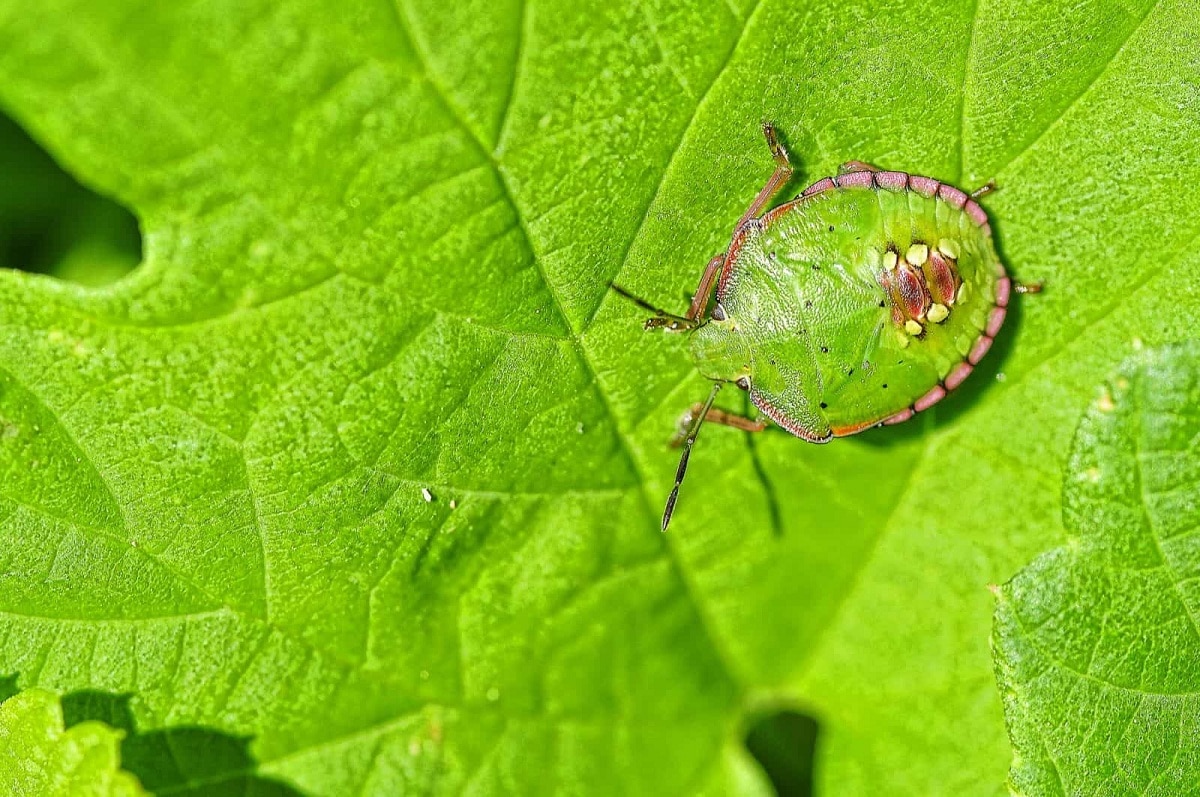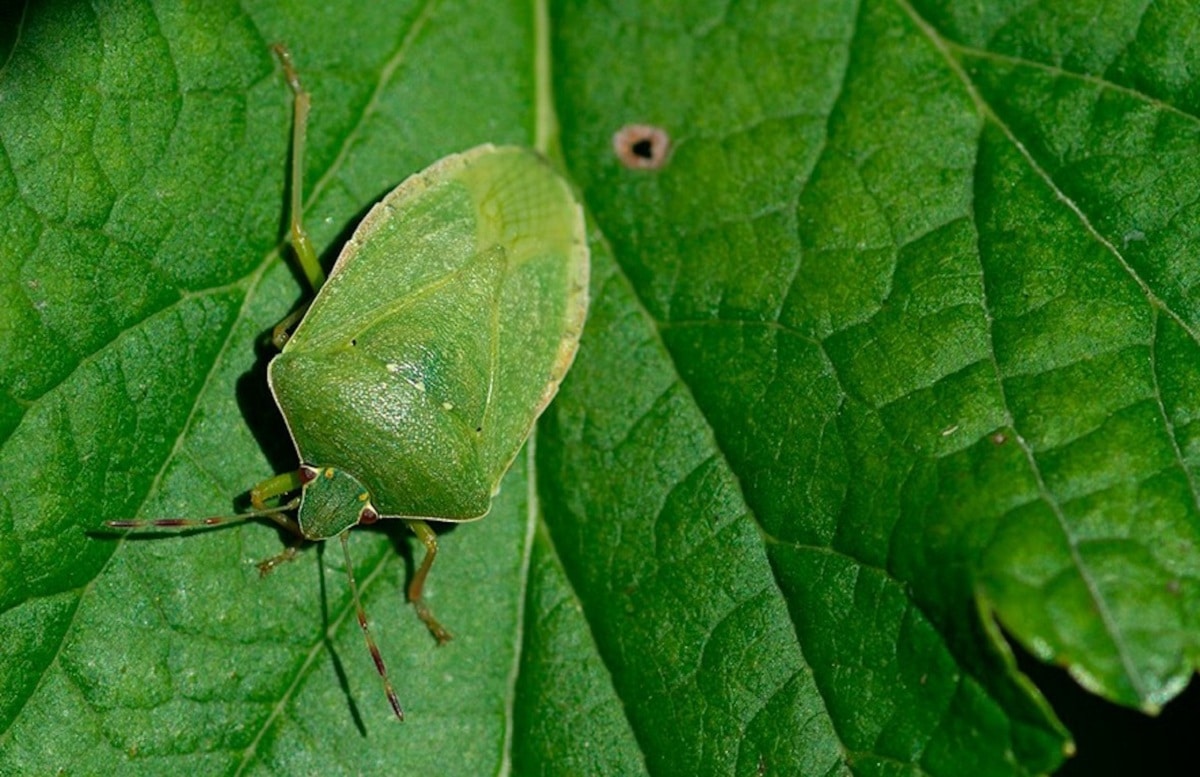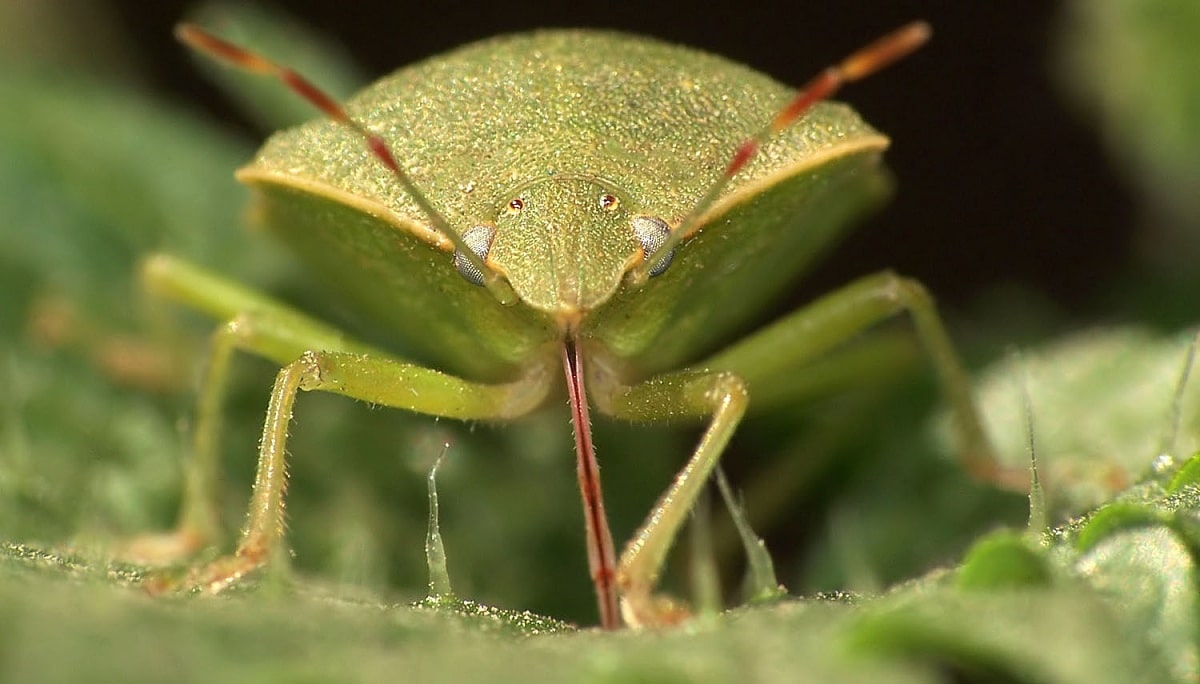
La green bug (nezara viridula) is a pest that affects many herbs, fruits, ornamental plants, and some cereal crops, especially wheat and soybeans. As in principle it does not cause significant damage like other pests such as caterpillars or ants, it usually goes unnoticed. In addition, when it is still in the nymph stage, it can be confused with harmless insects such as ladybugs. However, the danger it represents is very high, since it not only reduces the quality of the fruit, but can lead to the total loss of the harvest if it is not controlled in time.
For this reason, we are going to dedicate this article to telling you how to eliminate the green bug at home and what you should take into account.
Key features

As the name suggests, the green worm is a green pentapod with reddish-brown antennae. Some specimens show a pale cream-like or yellow stripe on the abdomen or margins of the head. There are also brown and black specimens that correspond to young stages, also called nymphs. Some varieties are bright red.
Although it is estimated that its origin is in Ethiopia, it is currently a fairly common species throughout the world. This is because they have a lot of drag on a very long flight, so they can travel great distances. In addition, its decentralized nature has always been favored by old trade routes.
Its body is about 15 mm long, oval in shape, longer than wide. It is a polyphagous species and as such is present in a wide variety of crops.. It feeds on the sap of more than 30 plants, although he prefers those that are recently fruiting or forming pods.
Due to their physical properties, green bugs can easily inhabit crops undetected. They move easily and their flat bodies allow them to hide in fairly small spaces. Also, they easily adapt to different conditions, but prefer warmer places. If the weather is good, an adult green worm can live about two months. If the weather turns cold, they may hibernate in leaf litter or anywhere warm and dark until spring.
How to identify the green bug

One way to identify the presence of green bugs in crops is by the damage they cause. Mainly a very characteristic stippling on the leaves. As these sheets unfold, the area near the dotted area breaks easily.
When the plague is high, the fruit will wilt or appear deformed and with black spots. In the case of wheat, the most affected area is the leaf known as the "flag", which is obtained in the leaf axil. Their presence can also be confirmed by careful inspection of crops and by searching for stubble, stem remains and leaves, as this is one of the places they like to take refuge. The green worms usually lay their eggs on the underside of the leaves, and a particular characteristic is that they lay them in the form of a honeycomb. So if we detect small light-colored balloons arranged in hexagons, it is most likely that we are facing a plague of green bugs.
Finally, the presence of green bugs can be identified by their stench. The glands of bed bugs secrete a rather peculiar, nutty, sweet but foul and unpleasant odour. Although they prefer to feed on plants, green worms can also bite animals or humans. Their sting is itchy or itchy, often with redness and swelling of the skin, much like a wasp sting. Sometimes several bites may appear in a straight line, although it is normal for them to be isolated bites.
How to get rid of green bug at home

They feed on a variety of crops, the most affected being: tomatoes, cucumbers, soybeans, wheat, melons, grapes, sesame, beans, cotton and citrus.
The damage they cause includes:
- Spread of the disease.
- Risk of fungal or bacterial infection, such as Alternaria.
- Plant drying.
- Fruit growth stops or appears deformed.
We are going to see what are the fundamental steps that must be taken into account to learn how to eliminate the green bug at home:
- Biological control is possible through parasitic wasps such as Trichopoda pennipes, Trissolcus basalis, Hippodamia converns, Telenomus spp. y Aridelus sp.
- Organic alternatives, such as nettle purine and neem extracts, can also be used.
- Strict weed control must be maintained.
- Avoid borders between plantations, have different phenolic cycles and choose the right time to plant.
- Keep crops free of pest host plants.
- Collect insects and eggs manually.
Home remedies and traps
We are going to analyze some of the traps and home remedies that are used to eliminate the green bug:
- For the plants on our balcony, we recommend cleaning the leaves by hand, we can use a solution of neem oil, or you can buy organic and natural insecticides such as potassium soap.
- To get rid of green bugs in the garden, we have to grow different types of plants as monoculture is good for their reproduction.
- We can also build houses for birds, the natural enemy of bedbugs.
- To get rid of green and brown bugs in our home, we can prepare a soap and water soak and spray it on the house where green bugs nest. Marseille soap can prevent dehydration and kill bed bugs. Having bedbug-proof mosquito nets in your home is undoubtedly one of the effective solutions.
Outdoor traps are available to kill bed bugs and prevent them from multiplying. The most recommended bed bug traps are pheromone traps, which are substances that masquerade as hormones and push green bugs into the trap.
DIY green bug traps are a great solution, all you need is a plastic bottle lined with textured paper and opened over your head. You can put a homemade insect pheromone on it, made with hot water, sugar and a teaspoon of yeast.
Recently, a trap that combines chromatic attractiveness and pheromones has also appeared on the market, which seems to be the most effective biological solution to eliminate green insects and any other type of green insects from the home.
I hope that with this information you can learn more about how to eliminate the green bug at home.